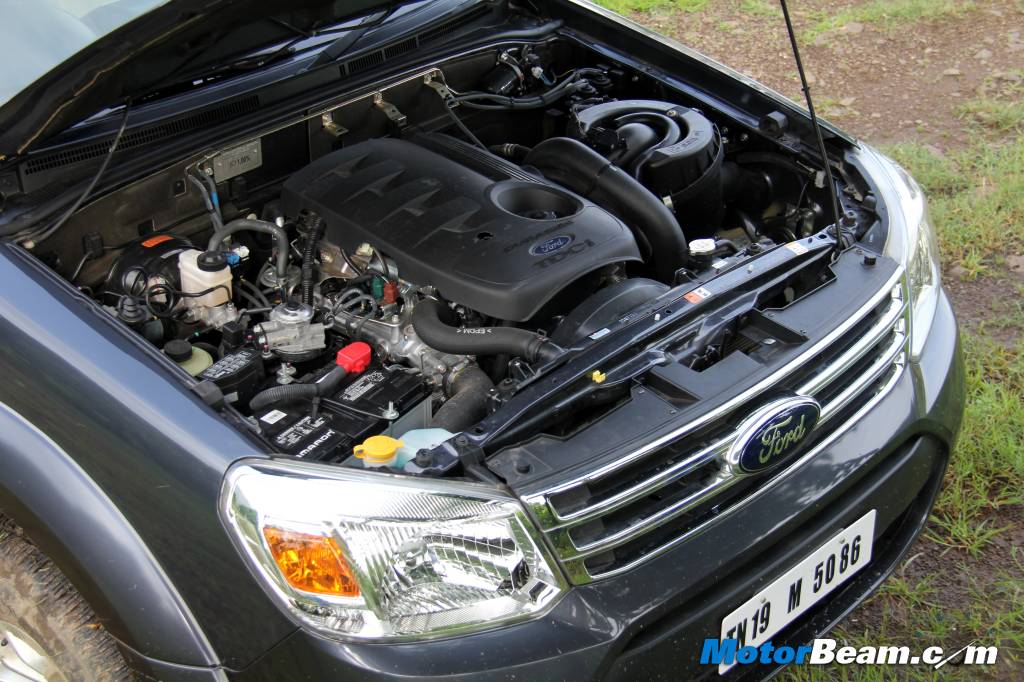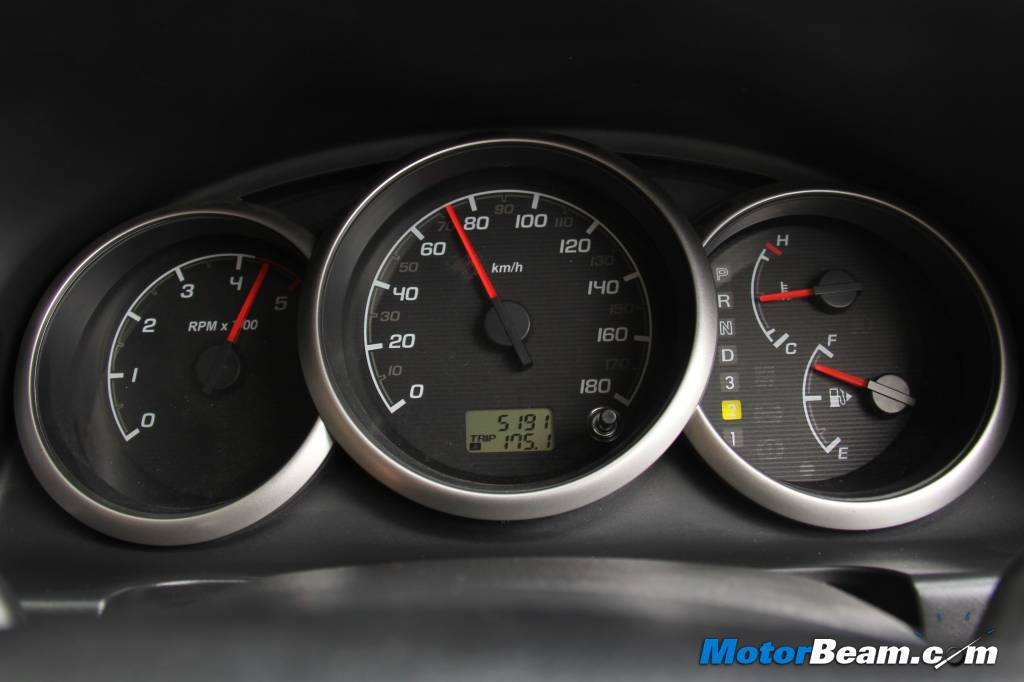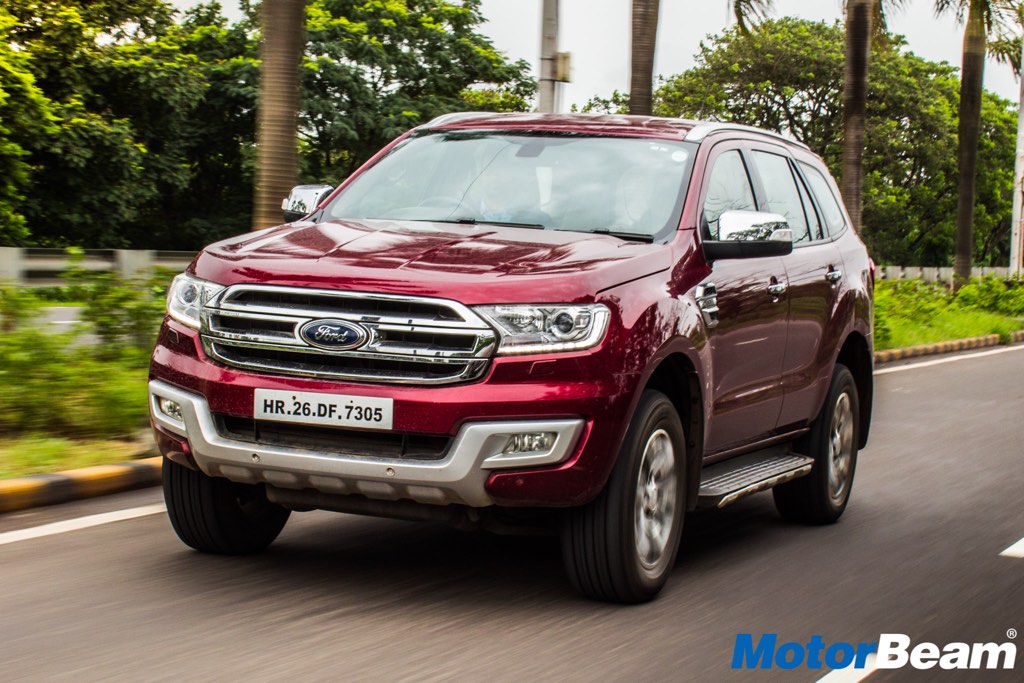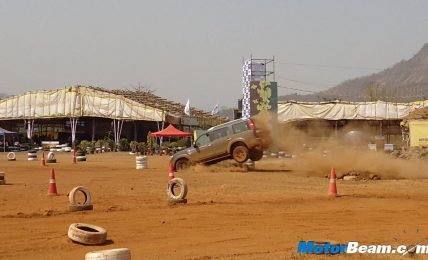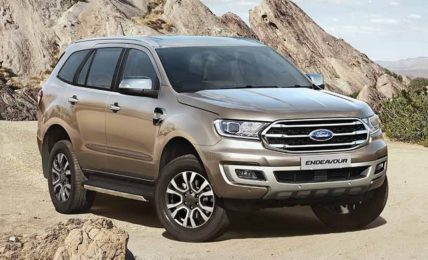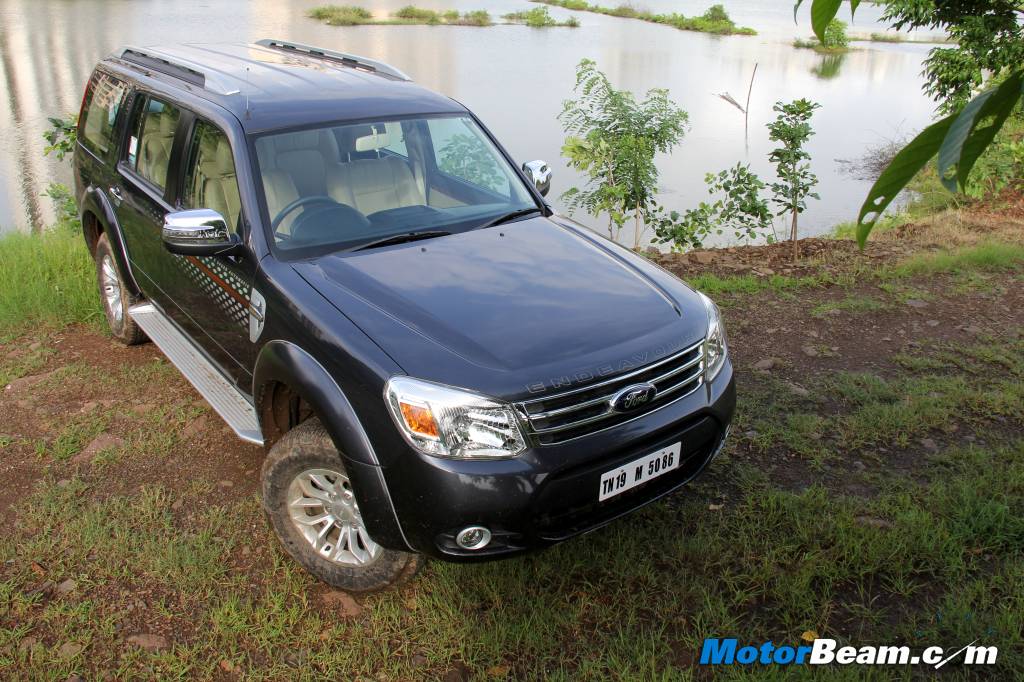
2014 Ford Endeavour Review
Car Tested: 2014 Ford Endeavour
Price OTR Mumbai: Rs. 24.51 – 28.46 lakhs
The minor changes to the Ford Endeavour do little to boost its appeal in the crowded SUV segment, it drives exactly like before
The Ford Endeavour has been around in the Indian market for a long time now, the American automaker having given us the first generation model way back in 2003, the same time when it was launched in Thailand. The Endeavour is an Asian centric model and the second generation arrived in 2006 and we got that one too. A facelift of the current generation came in 2009 and Ford India was quick to bring it to our market. The Endeavour has always sold well in its hay days but competition in the SUV segment has got very intense, resutling in the flagship Ford vehicle in India feeling the heat from all sides. We all are well aware about the next generation Endeavour which was expected to already go on sale by now but will only arrive late next year. To keep things rolling, Ford has given the Endeavour a very mild facelift as a stop-gap measure. Do the updates bring the Endeavour back in contention?
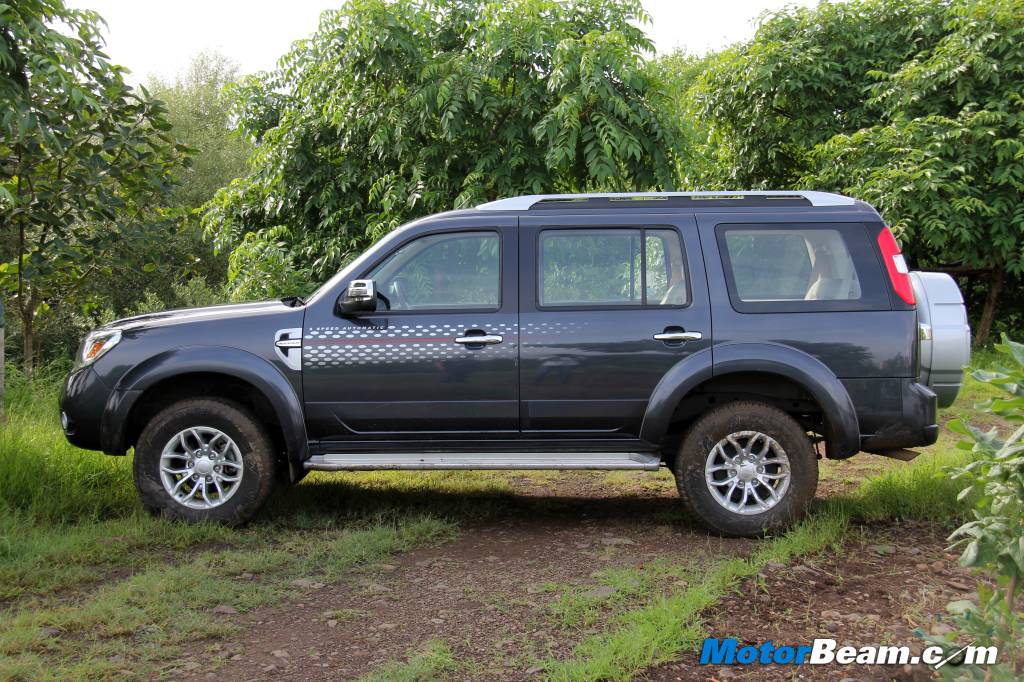
Exteriors – The changes on the outside might not seem visible but when you see both the pre-facelift and the new car back to back or side to side, you can make out the difference. The Endeavour gets a shorter front grille with one less slat while the front bumper (with a skid plate below) is new with a hexagonal design making it look more in sync with other Ford models. On closer observation, one will also notice the headlights have seen a very minor change and the ENDEAVOUR written on the hood is no longer engraved on a chrome strip. The side and rear remains the same (you still get a manual pull out type antenna which is out of place on a car of this price) and the only difference are the new alloy wheels, which too aren’t very different from the ones seen on the old model. The Endeavour continues to have a lot of presence on the road with its big and butch styling although it doesn’t come across as fresh even with the cosmetic tweaks up front.
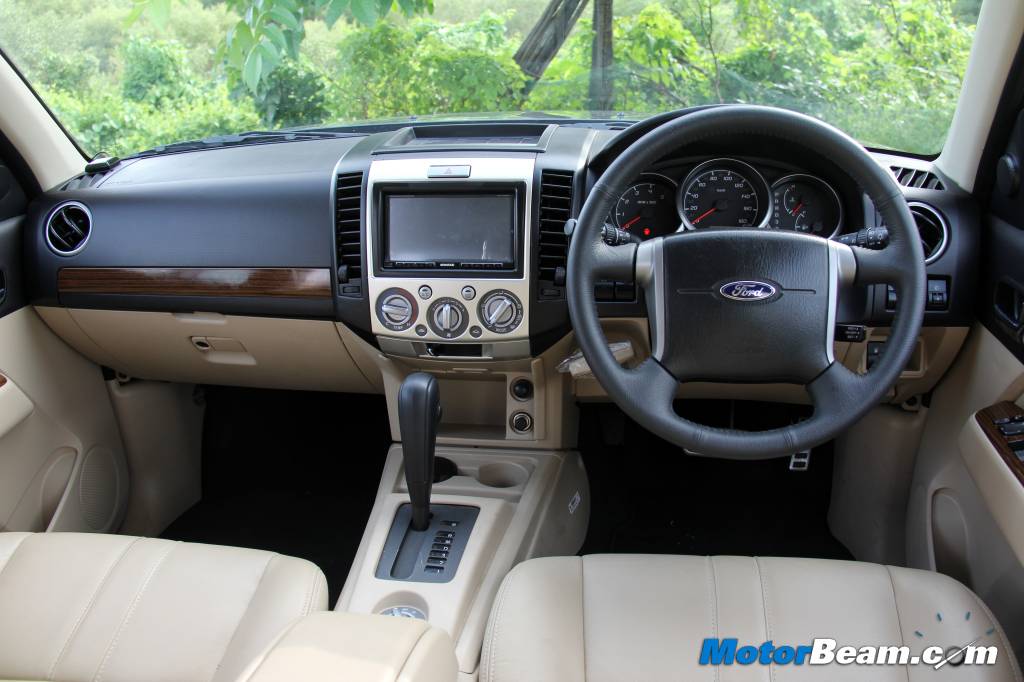
Interiors – Climb inside and you will find the same cabin as before and changes here are minimal too. Ford has given the Endeavour new leather seats but you still don’t sit high up as you would expect on such a tall SUV. What is terrific though is the visibility and those big rearview mirrors, there is also a reverse parking camera in the touch enabled infotainment system which gets Satnav and Bluetooth connectivity. The GPS sensor is placed on the left side of the dashboard and is visible all the time, even the mic is exposed which is placed on the right A-pillar. There are column stalk mounted audio controls but ironically they aren’t offered on the top-spec 4×4 variant. Front airbags and ABS are standard on all the three trims.
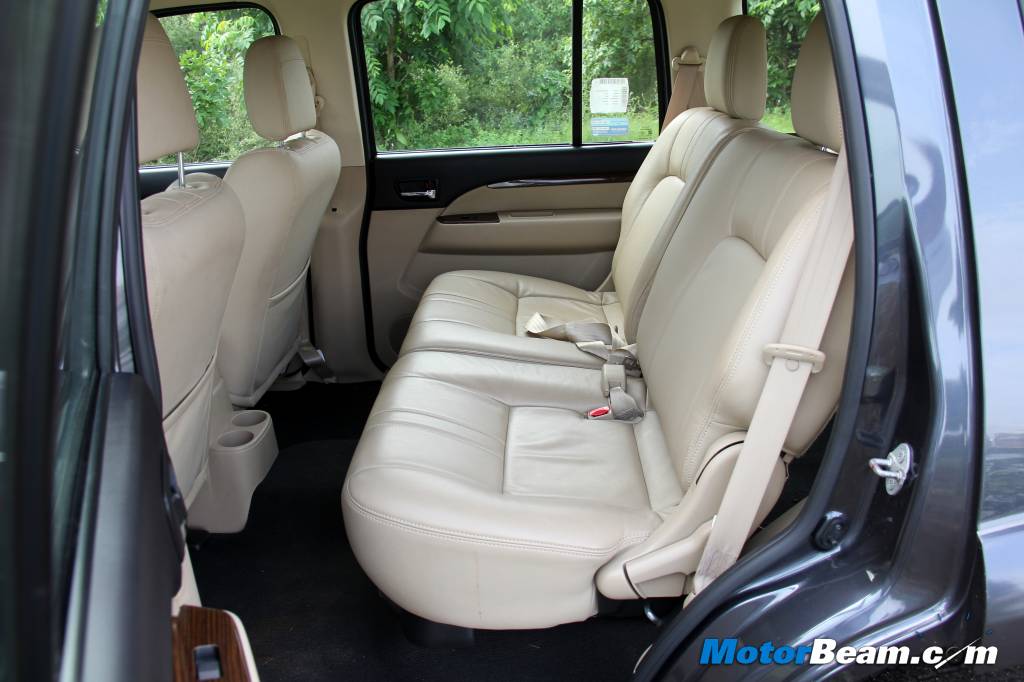
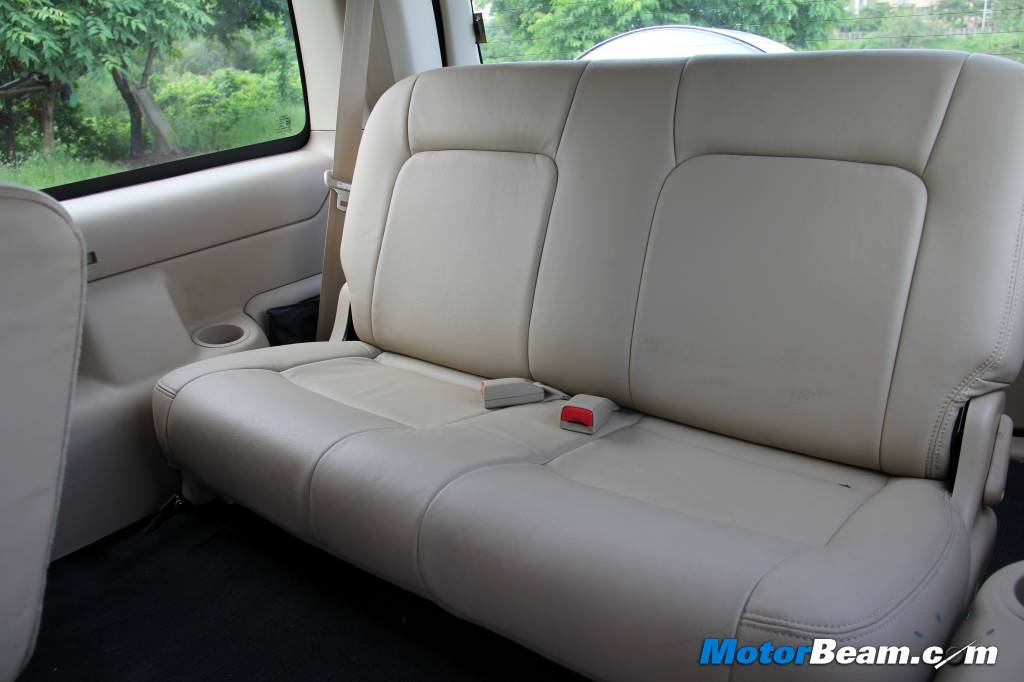
None of the seats have good under-thigh support although headroom and space is abundant in the cabin
Quality inside is good and the vehicle feels solidly put together, the doors shutting with a massive thud. There is a lot of space inside the cabin but all the seats lack on under-thigh support. The last row isn’t adequate for adults and is best used by children. One can fold the third row of seats to make way for a huge boot. Headroom is good all throughout and there are good enough storage spaces inside the cabin, the pull type handbrake lever yielding additional space at the centre where the 4WD switch is placed. There is no arm rest for the centre row while the third row doesn’t get headrests, AC vents for both these rows are positioned on the roof. We regularly drive EcoSports and Fiestas and were caught a bit off guard to find the indicator stalk on the right side as other Fords have it on the left side. This is because the Endeavour is an Asian centric model.
Performance – There are no mechanical changes to the Ford Endeavour and the engine options remain the same too. The base variant uses a 2.5-litre diesel engine, which generates 143 PS at 3500 RPM and a peak torque of 330 Nm at 1800 RPM, it’s only offered in 4×2 guise and is the only variant of the car to get a 5-speed manual gearbox. Our test car was equipped with the more powerful engine which happens to be a 3.0-litre diesel mill belting out 156 PS of peak power and 380 Nm of peak torque at 3200 RPM and 2500 RPM respectively. Both engines are 4-cylinder DOHC units using 16 valves and employing a variable geometry turbocharger (VGT). The 3.0-litre engined Endeavour is offered in 4×2 and 4×4 guise, being mated to a 5-speed automatic gearbox only.
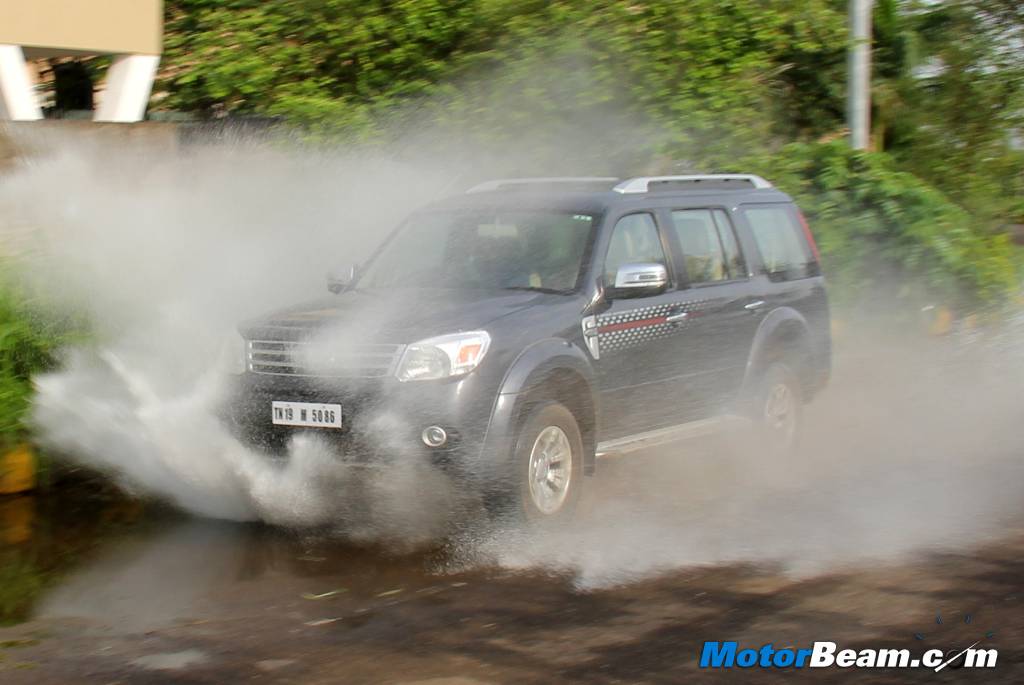
The Endeavour’s 3.0-litre TDCi mill has a lot of grunt, more than enough to shadow its 2 tonne weight
The 3.0-litre engine is a powerful unit and does well to mask the hefty weight of the car. The Ford Endeavour has good performance and gets going quickly, lugging along effortlessly without any hint of uneasiness. There is negligible lag which makes ambling around town an easy affair while the mid-end is strong and power only starts to trail off post 4000 RPM. Redline comes in at 4500 RPM. However, it’s the 5-speed autobox which lacks slick shifts as it’s slow to respond although you can position the transmission in 1, 2 or 3 gears as per need, there is no other way to manually get the cog you want as there is no tiptronic function on the box. The motor does get a bit noisy and tends to rev a bit more than needed but is more than apt for the job of giving the Endy swift performance. Our VBOX tests confirmed the Endeavour is no slouch, 0-60 km/hr takes 4.8 seconds while 0-100 km/hr comes up in just 12.45 seconds, progress slowing down post that with 120 km/hr taking another 6.45 seconds (at 18.92 seconds) to achieve. While Ford claims a mileage of 12.67 km/l as per ARAI, expect anything between 7.5-9 km/l in real world conditions.
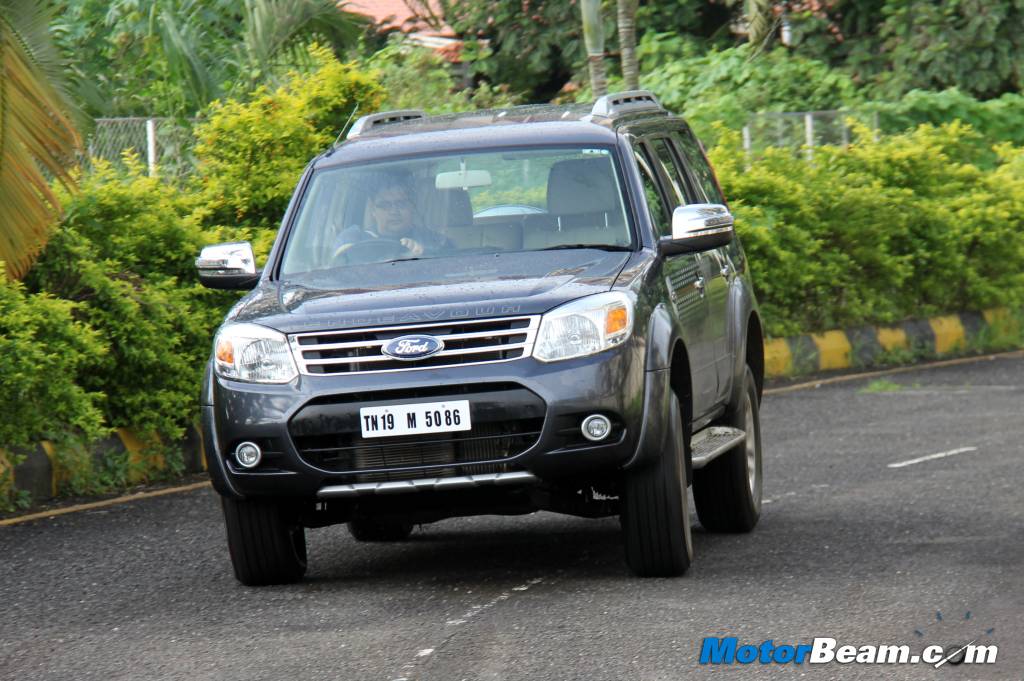
Driving Dynamics – The Endeavour is a big vehicle and from that perspective handling is good but there is quite a lot of body roll and this definitely isn’t a car you would find yourself driving spiritedly. The steering also lacks feel and doesn’t weigh up well, having ample numbness at the centre and feeling a bit heavy at parking speeds. The car does remain stable on the straights but the ride quality isn’t any great shakes. Using a leaf spring set-up at the rear, the Endeavour is underpinned by a ladder frame and feels bouncy even at low speeds. When you stretch the pace over bad roads, it does reveal some stiffness too.

The ride quality is even worst at the rear, specially the third row. Braking performance is decent but not very re-assuring as initial bite from the brakes is lacking. Where the Endeavour truly shines is off-road, it has ample ground clearance and the solid underpinnings help to tackle the worst of terrain with aplomb. The shift on the fly 4-wheel drive system works well and with the ample low-end grunt, taking the less beaten path is a walk in the park. In fact, it’s off-road where the Endeavour feels the best, it’s a whole lot of fun when you put it through some slushy terrain as it simply doesn’t bog down, it just keeps going ahead effortlessly.
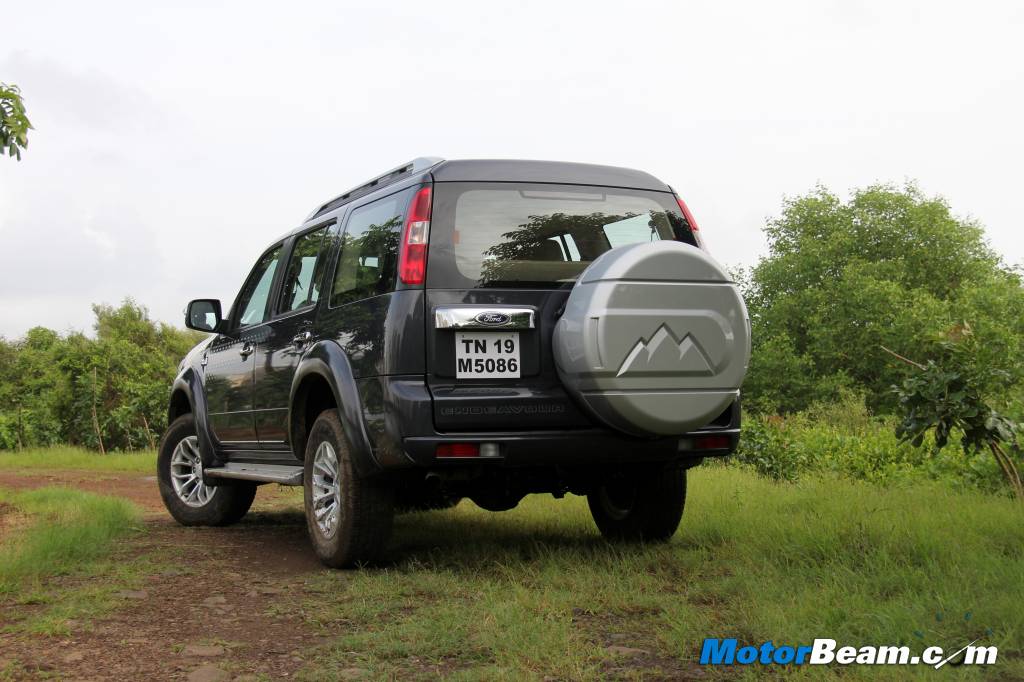
Verdict – The Ford Endeavour was a hot favourite in the SUV segment in the last decade. It has aged considerably since then and the lack of major updates has made it look pale in comparison. Ford on its part has done its best to freshen up the car by giving it a minor facelift but that’s not enough to keep it in contention against modern competition which comes in the form of the hugely impressive Hyundai Santa Fe, popular Toyota Fortuner and the value for money SsangYong Rexton. The Ford Endeavour is still an impressive car for its age but the next generation model is the one to watch out for as it will definitely shake up the segment.
The Ford Endeavour is high on street cred, interior space and engine performance but the current model feels too long in the tooth now. It does have a few things going for it but not enough to make it the default choice in the segment.
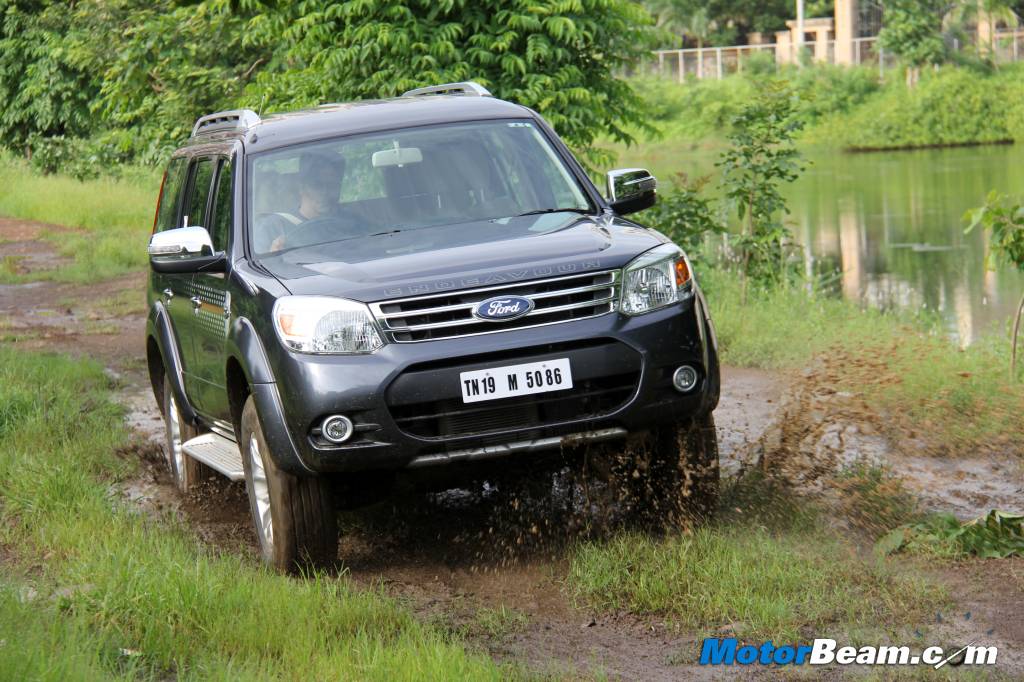
What’s Cool
* 3.0-litre engine performance
* Road presence
* Off-road ability
What’s Not So Cool
* Seats lack under-thigh support
* Bouncy ride
Alternatives: Toyota Fortuner, SsangYong Rexton, Hyundai Santa Fe


